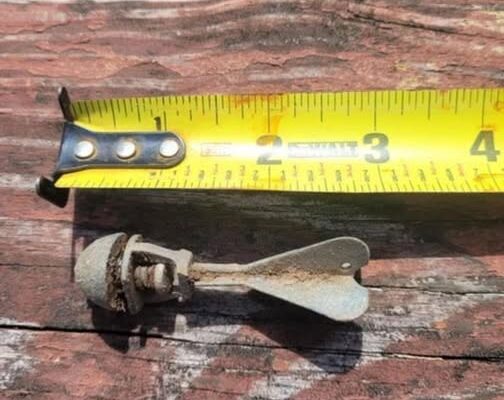
In a serene neighborhood located in the Northeast United States, a resident unearthed a small metal dart that was partially embedded in their yard. This dart, measuring only a few inches in length, had a threaded “nose” that could not be completely unscrewed and bore no identifiable stamps or markings.
Intrigued by its origins, the homeowner speculated that it could be a fragment of a child’s toy or an antiquated tool. In pursuit of clarity, they sought the expertise of local authorities; however, even a curator from the historical society and an antique shop proprietor were unable to provide a conclusive identification. The dart’s design appeared to echo the engineering styles of the early 20th century, yet its specific function remained elusive.
In an effort to gather more information, the homeowner turned to online platforms to share their discovery. The digital community responded promptly with various theories. One user, Minimum-Zucchini-732, proposed, “It’s probably a kid’s toy – you insert a cap in the end, throw it, and it pops upon landing.” Another contributor, Budget_Roof1065, remarked, “Cap bomb… You twist the top, insert a paper cap, twist it back down, and throw it into the air. Upon hitting the ground, it creates a bang.”
Despite these contributions, the true nature of the dart continues to elude identification. Its threaded nose and absence of markings remain a source of intrigue for those who come across it. For the time being, it stands as an engaging artifact and a topic of discussion, representing the enduring pursuit to reveal the concealed narratives of our environment.
